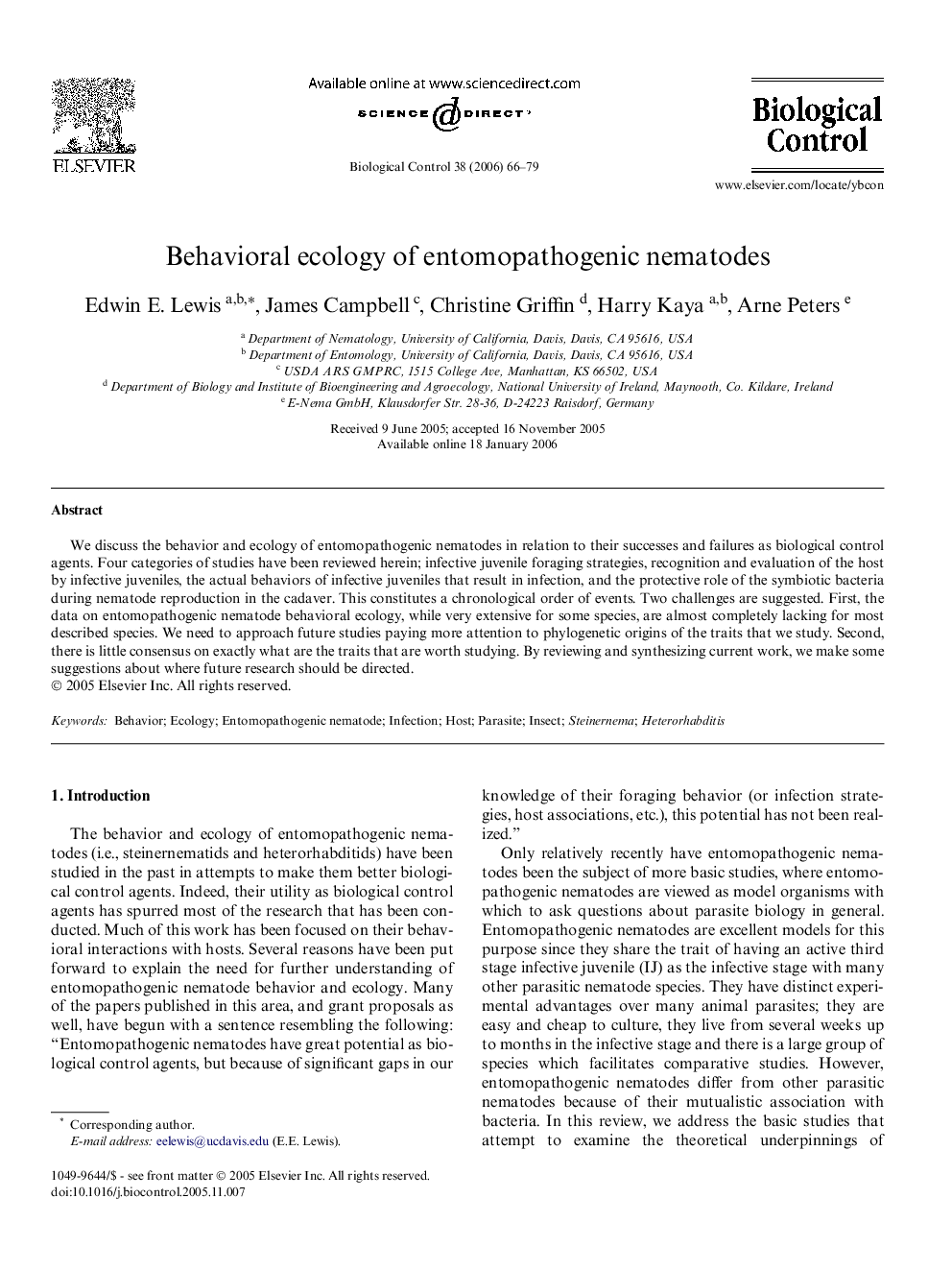| Article ID | Journal | Published Year | Pages | File Type |
|---|---|---|---|---|
| 4505362 | Biological Control | 2006 | 14 Pages |
We discuss the behavior and ecology of entomopathogenic nematodes in relation to their successes and failures as biological control agents. Four categories of studies have been reviewed herein; infective juvenile foraging strategies, recognition and evaluation of the host by infective juveniles, the actual behaviors of infective juveniles that result in infection, and the protective role of the symbiotic bacteria during nematode reproduction in the cadaver. This constitutes a chronological order of events. Two challenges are suggested. First, the data on entomopathogenic nematode behavioral ecology, while very extensive for some species, are almost completely lacking for most described species. We need to approach future studies paying more attention to phylogenetic origins of the traits that we study. Second, there is little consensus on exactly what are the traits that are worth studying. By reviewing and synthesizing current work, we make some suggestions about where future research should be directed.
